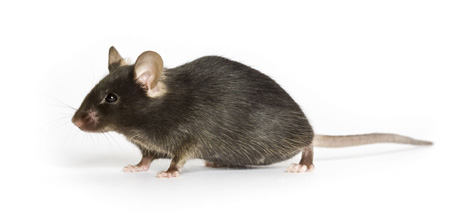For at least 2,400 years, beginning when Hippocrates used it to make wounds heal faster and to preserve food, silver has played an intriguing role in medicine. It has been used in sutures, ointments and eye drops to reduce the risk of infection, as a disinfectant and as a treatment for various disorders, including tropical sprue, epilepsy, gonorrhea and the common cold. Despite its benevolent properties, silver’s mechanisms of action had never been well characterized. Hence, with the rise of modern antibiotics, it fell out of favor. Now that infectious agents are becoming increasingly resistant to modern antibiotics, silver’s antibacterial properties are getting a second look, especially for their potential in fighting Gram-negative bacteria, which, due to a protective outer lipopolysaccharide layer, are more resistant to antibiotics than Gram-positive bacteria. In 2013, a Boston/Harvard University research team led by Jose Ruben Morones-Ramirez decided it was high time to characterize silver’s bactericidal properties.
In a series of experiments with wild-type and genetically modified E. coli – common Gram-negative bacteria – and wild-type C57BL/6J (B6J, 000664) mice – the Morones-Ramirez team found that silver synergizes with common antibiotics to significantly increase their efficacy (Morones-Ramirez et al. 2013). Similar to the action of several antibiotics, silver increases bacterial cell permeability, increasing the ability of antibiotics to enter the cell, and mediates the formation of reactive oxygen species (ROS). Both of these are key mechanisms of bactericidal activity. The Morones-Ramirez team concluded that, as an adjuvant, silver could markedly expand the scope and power of the current antibiotic arsenal, especially against Gram-negative bacteria.
Silver mediates ROS formation, increases cell permeability
By applying silver nitrate – a source of silver ions – to cultures of wild-type and gene knockout E. coli, the Morones-Ramirez team determined that silver foils bacteria by two key mechanisms. First, it acts through the tricarboxylic acid (TCA) cycle electron transport chain to increase the cytochrome bd-I oxidase-mediated production of superoxide. The excess superoxide interferes with iron homeostasis and precipitates the production of reactive hydroxyl (OH-) radicals and other ROS. Second, silver disrupts protein disulfide bonds, resulting in the production of misfolded proteins. These proteins accumulate in the cell’s interior and incorporate in, destabilize and increase the permeability of the bacterial cell membrane.
Silver adjuvant enhances antibiotic efficacy
The Morones-Ramirez team found that, as an adjuvant, silver acts synergistically to enhance the E. coli-killing ability of gentamicin, ampicillin and ofloxacin – three antibiotics that work by inducing bacteria to produce ROS. Additionally, by increasing the permeability of the E. coli cell, silver increases the tetracycline sensitivity of a tetracycline-resistant E. coli strain and renders otherwise vancomycin-resistant wild-type E. coli susceptible to vancomycin.
Silver fights E. coli infections in mice

The Morones-Ramirez team induced acute peritonitis in B6J mice by intraperitoneally infecting them with E. coli. They then treated them with sublethal doses of silver nitrate and found that the E. coli in these mice have a more permeable cell membrane and produce more OH- radicals than do non-treated mice. In another group of mice, the Morones-Ramirez team induced an E. coli urinary tract infection. Twenty-four hours after being treated with a gentamicin-silver combination, these mice were found to have four times less bacteria than untreated mice. Neither gentamicin nor silver alone was found to reduce the number of bacteria, further substantiating silver’s synergistic effects.
In another experiment, the Morones-Ramirez team found that vancomycin with a silver adjuvant significantly reduces the 24-hour bacterial cell count in B6J mice with mild E. coli peritonitis. Again, neither vancomycin nor silver alone was found to reduce the bacterial cell count. The results are even more dramatic in mice with acute E. coli peritonitis: A vancomycin-silver combination reduces the 24-hour E. coli cell count by 100-fold and 90% of the mice survive significantly longer than those treated with either substance alone.
Silver kills bacterial persisters and biofilms
Many infections harbor dormant, antibiotic-tolerating bacteria. These “persisters” are what likely form biofilms and mediate the chronic, recurring and stubborn infections of the urinary tract, lung, skin and other sites that are common in clinical settings. The Morones-Ramirez team found that a silver adjuvant enhances the efficacy of ampicillin, gentamicin and ofloxacin against E. coli persisters. They also found that a silver-gentamicin combination is very effective in fighting a biofilm in live mice: Whereas gentamicin alone does not reduce the E. coli cell count in a biofilm grown on a catheter and then implanted in B6J mice, and silver alone reduces the count by less than 10-fold, the silver-gentamicin combination reduces the bacterial cell count by 100-fold.
In summary, the Morones-Ramirez team demonstrated that silver destroys Gram-negative bacteria by mediating an ROS-producing cell environment and by increasing the permeability of the bacterial cell. The low doses of silver used in their experiments are not toxic to various human primary cells and cell lines (keratinocytes, hepatocytes and neurons), nor do they adversely affect the kidney, pancreas or liver metabolism of healthy B6J mice. As such, silver was found not only to be an antibiotic in its own right but also to restore and even strengthen the bactericidal punch of drugs to which bacteria have become resistant. It can also impart bactericidal action to drugs – like vancomycin – that, due to their large molecule size, cannot normally penetrate the bacterial cell.